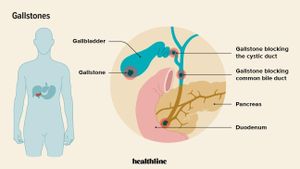Starting from February 2025, pensioners across Russia will witness significant numbers boosting their monthly incomes as part of the new pension indexation strategy initiated by the government. Effective from February 1, various pensions and allowances have been indexed by 9.5% due to rising inflation, marking one of the largest adjustments seen for retirees.
According to TASS, key updates from parliamentary sources revealed expectations of pension system improvements, as confirmed by Deputy Chaplin. The individual pension coefficient's targeted amount increased impressively from the initially projected 142.76 to 145.69 rubles after additional adjustments, proving the government’s commitment to addressing inflation concerns.
Further changes include enhancements to the fixed payment for old-age insurance pensions, which rose unexpectedly to 8,907.7 rubles from the previously estimated 8,728.73 rubles. Expert recommendations highlighted the necessity of securing social support for non-working retirees, with allocations for federal social supplements to the minimum living wage reaching 155.46 billion rubles for the year 2025, representing a 16.08% increase from the previous financial term.
Chaplin also shared insights concerning social pensions, which are set to rise by approximately 1,980.97 rubles by the end of 2025, leading to an average payment of 15,456.93 rubles. The indexation of these pensions will occur annually on April 1, reflecting growth relative to the minimum living wage adjustments. Specifically, pension increases will be 14.75% for 2025, followed by 4.5% and 4% for the subsequent years, respectively.
Differences from previous indexation methods are notable as the current structure now covers working pensioners as well. For example, over 240,000 active workers aged 65 and older remain within the labor force, benefitting from adjustments made during this indexation phase.
Regions such as Sverdlovsk observe similar patterns, where over one million residents’ pensions were indexed starting January 1, 2025, showing increases of 7.3%. Following supplementary evaluations aligned with actual price growth, pensions then escalated up to the 9.5% rate targeted for effective compensation to align with overall inflation increases.
Olga Galyuk, deputy director of the Social Fund’s regional office, reported on measures adopted which ensured the effective distribution of these indexed amounts starting from February 2025. Notably, working pensioners will now automatically receive increases, allowing them to experience adjustments regardless of continued employment.
Further updates come from families experiencing changes with the increased living wage affecting child benefits as well. For families with children under 17, monthly allocations now range from 10,643 to 21,286 rubles, differing with household income levels, alongside significant stipends for pregnant women.
Moving beyond single regions, the pension indexation strategy resonates across various areas, including the Tambov region, which confirmed enhancements for approximately 297,900 pensioners around the same timeframe—executed on both existing and future payouts.
To address the typical concern surrounding income adequacy, the current change includes a revised methodology for calculating supplements for existing pensioners who continue to work. The calculations will emanate from projected payments based on the historical values of accumulated pension rights as opposed to unemployed benchmarks, enabling recipients to earn slightly higher adjusted rates.
The indexation scheme isn't limited to immediate current adjustments but extends its impact by forecasting enduring pension growth systematized for upcoming years. Beginning from 2026, the annual adjustments will not only utilize the inflation rate but also integrate returns from investment portfolios, thereby establishing comprehensive financial growth systems for pensions.
The anticipated dual indexation scheduled for February and April 2026 will reflect inflationary trends unveiled earlier and account for income surges within the Pension Fund’s strategy as outlined by Svetlana Bessarab, member of the State Duma committee overseeing labor and veteran affairs.
These various measures taken together signify the Russian government's proactive approach to pension sustainability, social support for working pensioners, and addressing inflation fears—consequently seeking to stabilize the socioeconomic conditions for millions of retirees across the country.



